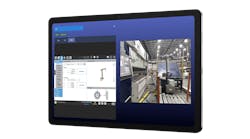I was casually discussing packaging machines, and a little of their history with Aurelio Banda, president of Beckhoff North America (www.beckhoff.com) at Pack Expo this year. Not to overgeneralize, but I don't remember much innovation on the old machines. It was highly mechanical and easily maintainable; if chains or sprockets got damaged or came loose, the mechanic could fix it. Today, innovation and technology are a requirement.
"These old packaging machines were very much like tinkering on your car, like my 1965 Chevy Super Sport," said Banda. "I loved that car. Fast forward to today, and the kids are more interested in video games. It's all about the technology."
Now when you bring in your car for service, the first thing they do is plug it in and view the diagnostics on laptops. They probably also know immediately how much to charge you via a cloud app. Soon you will be receiving the diagnostic about your car on your smartphone.
"The United States consumes a lot; we use a lot of technology and have a lot of preferences, so it creates a rich manufacturing environment to satisfy customer demand," says Banda. "It's worth noting that there is significant U.S. influence in technology with the use of Microsoft operating systems, Azure cloud services and Intel processors. Even though Beckhoff is designed and built in Germany, we integrate much of what is developed in the United States, especially on the IT side."
Beckhoff’s approach to the future is to take the best from automation technology (AT) and IT to provide tools to engineering teams in one universal environment. "The convergence of AT, which is the space Beckhoff is in, and the IT world of our manufacturers is trying to figure out how to manipulate not just the demand that's coming, the information, but the connectivity," says Banda. "This can be machine-to-machine or enterprise-to-machine. We are seeing a lot of changes and expect only more in the future. As the convergence becomes tighter, the requirements of the PC-based control architecture are becoming more of the central point around the discussion at the machine level to extract data and to push down data that can then be used to make changes."
Industry has been in this world of PLC-based architecture for decades. "It does machine control with software logic to cycle the machine, connect to an HMI and control motion, safety and vision," says Banda. "The brown factories of today are PLC-rich. The way to cycle, control and also extract that data is with industrial PCs. The new ones are very compact, a similar form factor to a PLC, with the same control capabilities, but also offer high-speed, IT-ready communication and other high-value functions for robotics, safety, high-end measurement, condition monitoring and cloud connectivity and IoT."
Innovation and technology are shrinking the industrial PC. "It's a machine controller with advanced communications, but it's only about the size of a cell phone," says Banda. "The miniaturization of the processors was made for the smartphone market, and some of the same technology works well integrated into Beckhoff's compact industrial PCs."
This is a direction Beckhoff sees much of industry headed. "We are looking ahead to how we can get into a low-cost form factor that is scalable and that can be built upon," says Banda. "Technology is bringing cost down, but performance is improving. Industry is starting to realize this more and more. This whole IoT connectivity aspect is where the interest is. You see it on the retail side of things, with people walking around with PCs in their hands—the smartphone. Automation will be following this cost-per-performance form factor, and this has been real strong at Beckhoff and the direction of industry."
Now that automation is in the environment where technology is pushing cost down and performance up, Beckhoff’s owner likes to point to Moore's Law on how everything is increasing exponentially, continues Banda. "With this increasing processing power, we have a PC-based hardware architecture that can be scaled up to well over 32 cores in one hardware device," he says. "That's some real power to grow into. It's a server-like, PC-based environment. Each core can be its own processor to control a machine."
Beckhoff is finding that the generation of young engineers entering the market is groomed in technology. "When they become involved on a manufacturing floor or in design, they want the tools they are used to in their new automation environment, as well," says Banda. "It's pushing our innovation cycle along those lines. Things will be more user-friendly and will have the right technology."
When customers make an investment, they are looking at ways they can get to that big IoT in the sky that everyone is talking about. Some are working hard at it while others are taking a wait-and-see attitude. Beckhoff wants to educate its customers to help them to make good decisions around the plant when planning for IoT. "The IoT is such a big word," says Banda. "We can connect, but what is it you really want to accomplish?"






